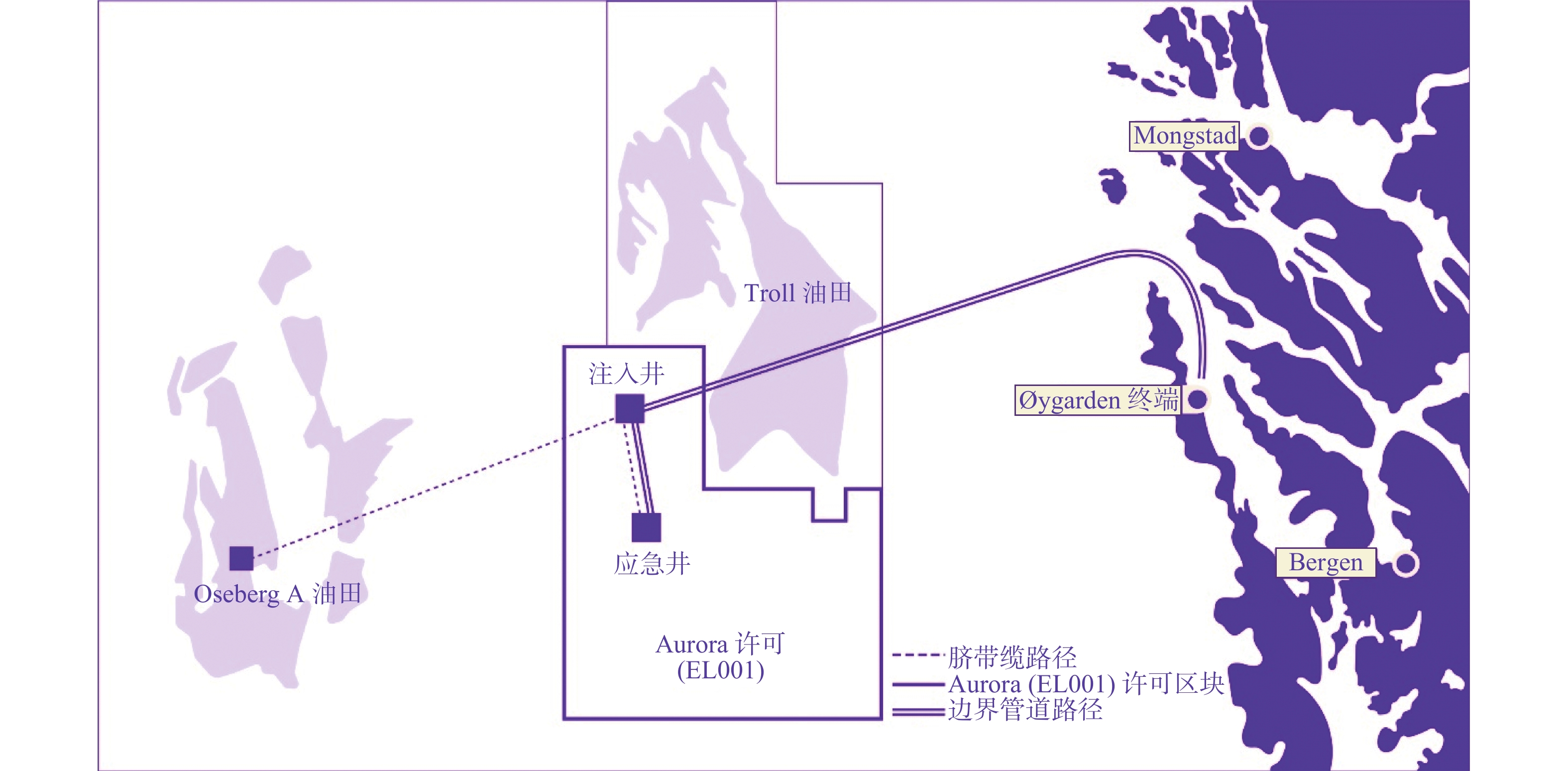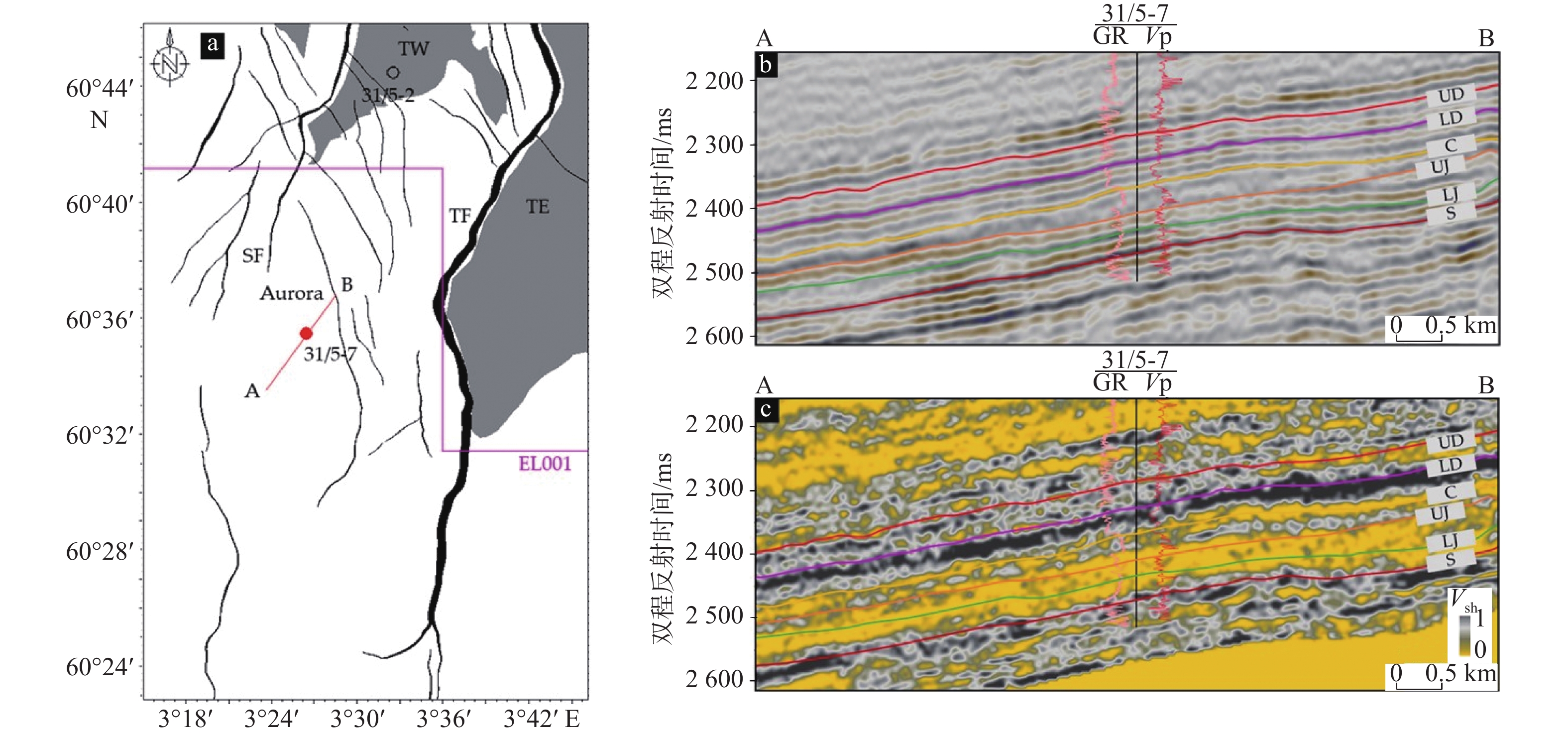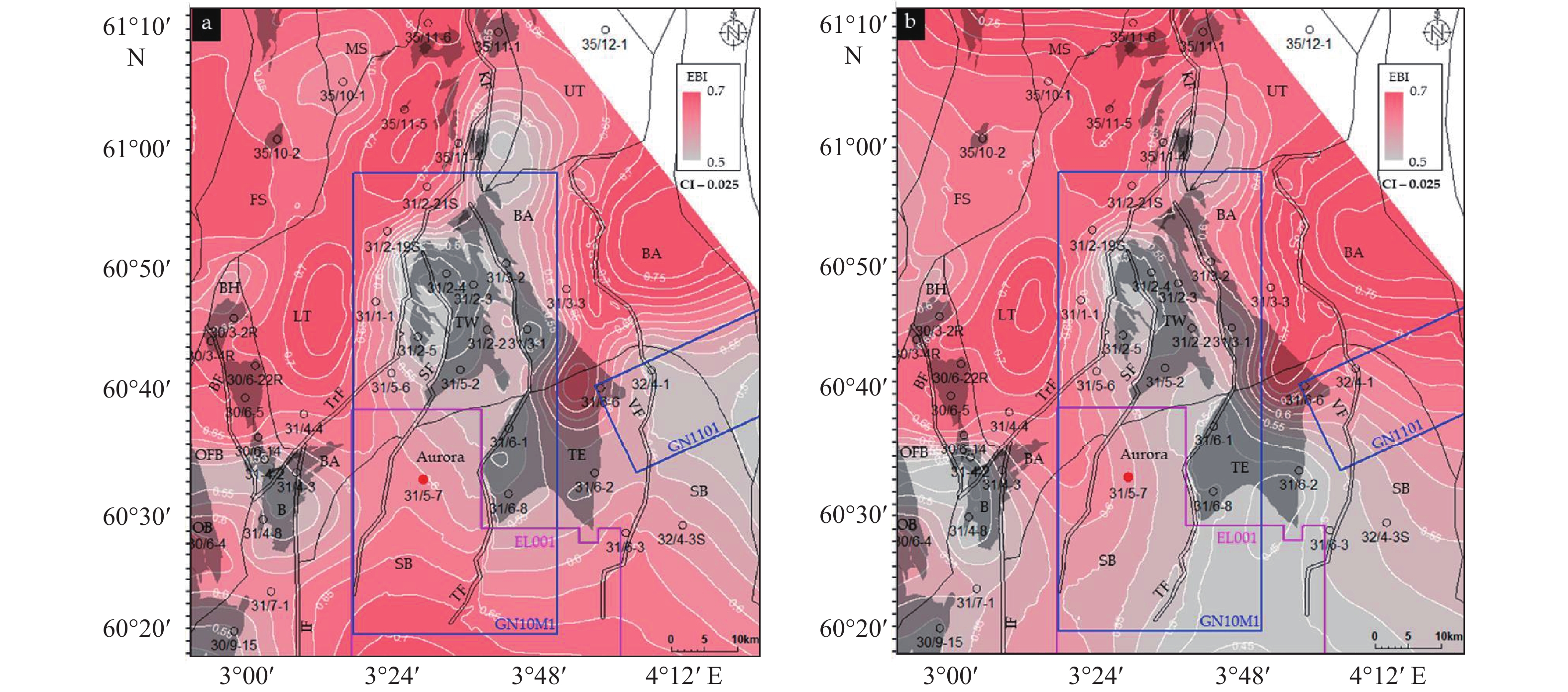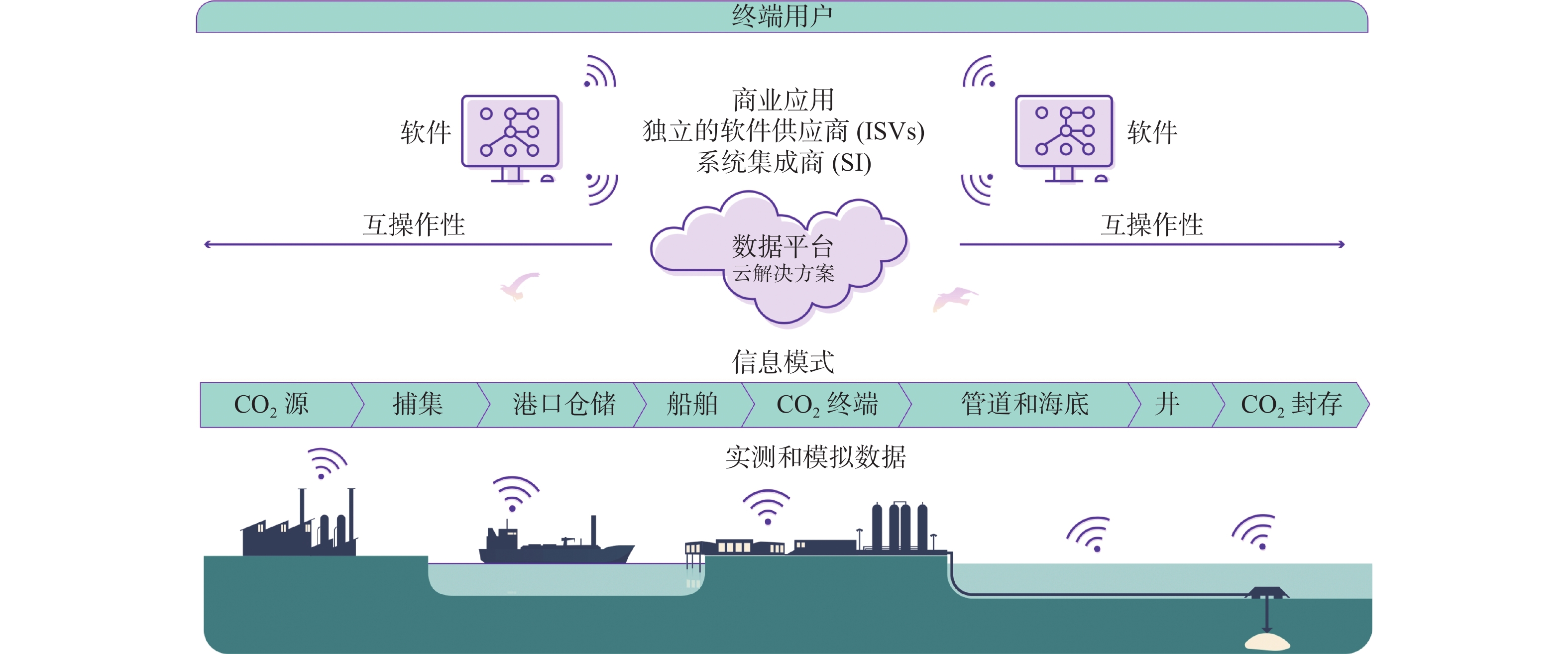Progress of Norway's Northern Lights project and its implications for offshore CO2 geological storage of China
-
摘要:
二氧化碳地质封存是二氧化碳捕集利用与封存(CCUS)技术的关键环节,海域二氧化碳地质封存是将工业源捕集的二氧化碳通过管道或船舶运输至封存点,并以超临界态注入到海底咸水层、枯竭油气藏等地质体中,从而实现与大气永久隔离的过程。海域二氧化碳地质封存具有封存潜力大、安全性高、环境风险小的特点,受到欧美等国家和地区的高度重视。挪威作为最早开始商业应用的欧洲国家,已成功实施了Sleipner等商业应用项目。2021年3月,挪威政府正式批准了北极光项目,是全球首个获批的二氧化碳跨境运输并实施海底地质封存的项目,对于推动中国封存技术的发展具有重要的借鉴和启示意义。本文系统梳理了北极光项目的概况和最新研究进展,总结了该项目在实施过程中所积累的宝贵经验,旨在为中国海域二氧化碳地质封存事业发展提供启示和借鉴,有效助力中国实现“碳达峰、碳中和”的目标。
Abstract:Geological storage of carbon dioxide (CO2) is a critical technology of CCUS (carbon capture, utilization, and storage). Offshore CO2 geological storage involves transporting CO2 captured from industrial sources via pipelines or ships to the storage site and injecting it in its supercritical state into geological formations such as saline aquifer and depleted oil and gas reservoirs beneath the seabed, thereby achieving permanent isolation from the atmosphere. Offshore CO2 geological storage is characterized by “large storage potential, high safety, and low environmental risks,” and has received widespread attention from countries and regions such as Europe and the United States. Among them, Norway is the first country to initiate commercial applications, such as the Sleipner Project. In March 2021, the Norwegian government approved the Northern Lights project, the world’s first approved project for cross-border transportation of CO2 and its subsequent geological storage beneath seabed. This paper systematically reviews the overview and the latest research progress of the Northern Lights project, summarizes the valuable experience accumulated during its implementation, aiming to provide insights and references for the development of offshore CO2 geological storage in China and contribute to the realization of China’s “carbon peak and carbon neutrality” goals.
-
Key words:
- CO2 geological storage /
- Norway /
- Northern Lights /
- safety and stability assessment /
- decarbonization
-

-
图 1 EL001许可区块平面分布[5]
Figure 1.
图 2 EL001许可区块平面图和过注入井地震剖面[10]
Figure 2.
图 3 Drake组的脆性指数图[12]
Figure 3.
图 4 长船项目CCS全链条示意图[5]
Figure 4.
图 5 正在建造的2艘液态二氧化碳运输船[5]
Figure 5.
图 6 数字化全链条示意图[5]
Figure 6.
图 7 挪威Øygarden二氧化碳陆地接收终端[5]
Figure 7.
-
[1] LUO J,XIE Y,HOU M Z,et al. Advances in subsea carbon dioxide utilization and storage[J]. Energy Reviews,2023,2(1):100016. doi: 10.1016/j.enrev.2023.100016
[2] 陈建文,王嘹亮,王平康,等. 中国海域沉积盆地咸水层二氧化碳地质封存潜力[J]. 海洋地质与第四纪地质,2024,44(3):98-114.
CHEN J W,WANG L L,WANG P K,et al. Carbon dioxide geological storage potential in saline aquifer of sedimentary basins in China sea[J]. Marine Geology & Quaternary Geology,2024,44(3):98-114.
[3] FURRE A K,EIKEN O,ALNES H,et al. 20 years of monitoring CO2-injection at Sleipner[J]. Energy Procedia,2017,114:3916-3926. doi: 10.1016/j.egypro.2017.03.1523
[4] BJRNAR T I. Assessing potential thermo-mechanical impacts on caprock due to CO2 injection: a case study from Northern Lights CCS[J]. Energies,2021,14:5054. doi: 10.3390/en14165054
[5] Northern Lights Joint Ventures. Northern Lights annual report 2023[R]. Stavanger: Northern Lights Joint Ventures, 2024.
[6] THOMPSON N,ANDREWS J S,WU L,et al. Characterization of the in-situ stress on the Horda Platform: a study from the Northern Lights Eos well[J]. International Journal of Greenhouse Gas Control,2022,114:103580. doi: 10.1016/j.ijggc.2022.103580
[7] GENTILEA V,CAUCHOIS G,ÅLUND I,et al. Carbon footprint of the Northern Lights JV CO2 transport and storage value chain[R]. Stavanger: Northern Lights Joint Ventures, 2023.
[8] RAHMAN M J,FAWAD M ,MONDOl N H. Potential secondary seals within overburden:observation from the CO2 storage sites Aurora and Smeaheia,northern North Sea[J]. International Journal of Greenhouse Gas Control,2024,133:104101.
[9] MENEGUOLO R,SUNDAL A,MARTINIUS A W,et al. Impact of the lower Jurassic Dunlin Group depositional elements on the Aurora CO2 storage site,EL001,northern North Sea,Norway[J]. International Journal of Greenhouse Gas Control,2022,119:103723. doi: 10.1016/j.ijggc.2022.103723
[10] RAHMAN M J,FAWAD M,JAHREN J,et al. Influence of depositional and diagenetic processes on caprock properties of CO2 storage sites in the northern North Sea,offshore Norway[J]. Geosciences,2022,12(5):181. doi: 10.3390/geosciences12050181
[11] RAHMAN M J,FAWAD M,MONDOl N H. Integrated containment risks assessment for subsurface CO2 storage:overburden analysis and top seal integrity study,offshore Norway[J]. International Journal of Coal Geology,2024,282:104440.
[12] RAHMAN M J,FAWAD M,JAHREN J,et al. Top seal assessment of Drake Formation shales for CO2 storage in the Horda Platform area,offshore Norway[J]. International Journal of Greenhouse Gas Control,2022,119:103700. doi: 10.1016/j.ijggc.2022.103700
-




 下载:
下载:





